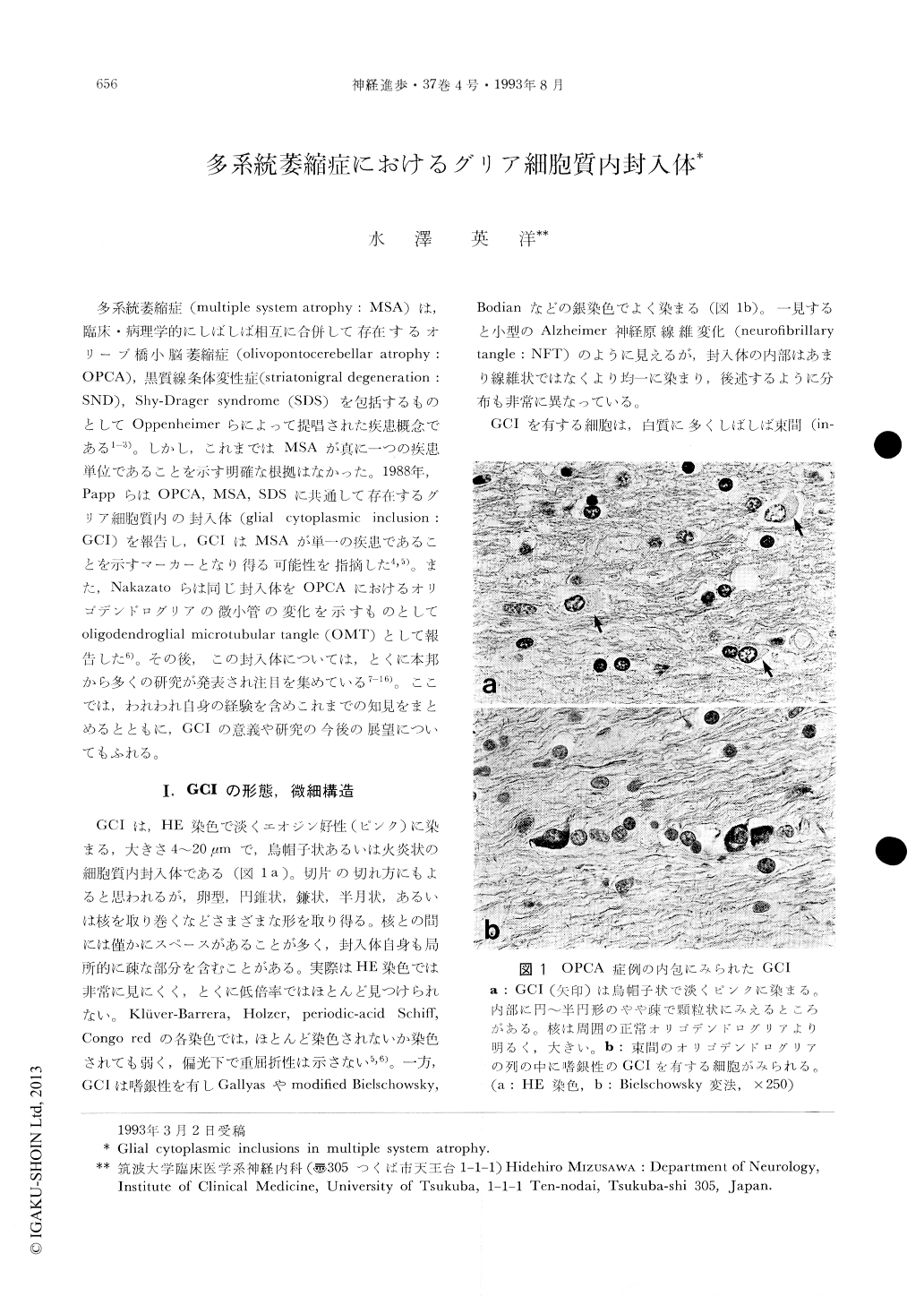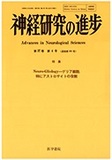Japanese
English
- 有料閲覧
- Abstract 文献概要
- 1ページ目 Look Inside
多系統萎縮症(multiple system atrophy:MSA)は,臨床・病理学的にしばしば相互に合併して存在するオリーブ橋小脳萎縮症(olivopontocerebellar atrophy:OPCA),黒質線条体変性症(striatonigral degeneration:SND),Shy-Drager syndrome(SDS)を包括するものとしてOppenheimerらによって提唱された疾患概念である1-3)。しかし,これまではMSAが真に一つの疾患単位であることを示す明確な根拠はなかった。1988年,PappらはOPCA,MSA,SDSに共通して存在するグリア細胞質内の封入体(glial cytoplasmic inclusion:GCI)を報告し,GCIはMSAが単一の疾患であることを示すマーカーとなり得る可能性を指摘した4,5)。また,Nakazatoらは同じ封入体をOPCAにおけるオリゴデンドログリアの微小管の変化を示すものとしてoligodendroglial microtubular tangte(OMT)として報告した6)。その後,この封入体については,とくに本邦から多くの研究が発表され注目を集めている7-16)。ここでは,われわれ自身の経験を含めこれまでの知見をまとめるとともに,GCIの意義や研究の今後の展望についてもふれる。
Glial cytoplasmic inclusions (GCIs) were first described by Papp et al in 1988 as corn-shaped, slightly eosinophilic, and darkly argyrophilic inclusions found within cytoplasm of oligodendrocytes in multiple system atrophy (MSA) which includes olivopontocerebellar atrophy (OPCA), striatonigral degeneration (SND) and Shy-Drager syndrome (SDS). They are composed of randamly aggregated filaments of 20~50 nm in diameter associated with granular or fazzy material. Immunocytochemically, GCIs are heavily ubiquitinated, and stained strongly for αB-crystallin and MAP5. Anti-α-and β-tubulin, anti-tau, and anti-paired helical filament antibodies also recognize weakly to moderately some GCIs.

Copyright © 1993, Igaku-Shoin Ltd. All rights reserved.


